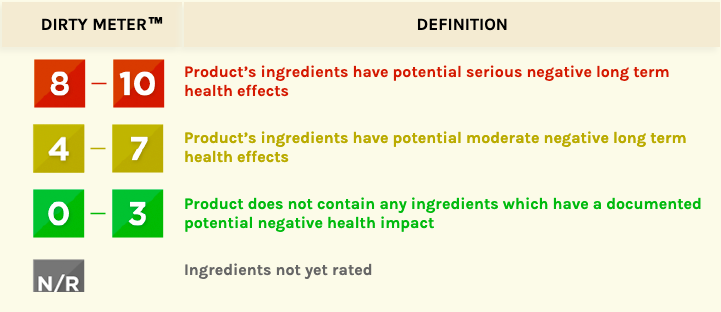Think Dirty’s Methodology

Today on our blog we want to talk to you about our methodology. There have been some concerns raised regarding our policies, methodology and accuracy and we want to take this opportunity to clear up some misrepresentations and false information.
There is a common misconception that natural ingredients are always safe while synthetic chemicals and ingredients are always toxic. Unfortunately sorting out which products are safe is not that simple. Our policy as a company is to rate solely based on toxicity and not based on whether the ingredients are natural or not. The first step in determining any sort of rating you will see in The Think Dirty App is to look for scientific research related to the ingredient. We use peer-reviewed studies from credible scientific journals for this step. Additionally, we look at a variety of government regulators and health organizations for any information or warnings. These organizations include EU Coslng, Health Canada, and the FDA among others. This is done before any rating is formulated.
Fragrance can be one of the most confusing ingredients for consumers. The question often centres on whether natural fragrances are always safe and synthetic fragrances are always toxic. In short, fragrances are notorious for hiding a host of toxic ingredients. This is due to the fact that, in North America, companies are not required to disclose fragrance components. This is why we err on the side of caution when rating all fragrance in-app, natural or not. If a company has a clear fragrance policy or reaches out to us directly with documentation regarding their fragrance, then we will make the appropriate adjustments. Our priority is protecting consumers and until we receive confirmation of fragrance safety then we do not adjust any ratings.
Regarding natural vs. synthetic fragrances, it is true that natural does not necessarily mean safe, nor does synthetic mean toxic. As stated above, we require documentation to evaluate a company’s fragrance. Take lime oil as an example. Lime oil is rated a 3 in-app. For all you new Dirty Thinkers, a 3 rating is considered relatively safe with mild concerns for specific individuals. Lime oil is a potential allergen for some individuals, it is therefore rated a 3 rather than a lower rating (i.e. 0–2). If you were to click into the ingredient in-app you would see the warning of it being a potential allergen. This applies to every ingredient. You can always learn more by tapping the ingredient heading to get an expanded view with explanations.
Topical applications of ingredients can be harmful as products put on the skin have the potential to be absorbed into your bloodstream. This has been a major topic of concern as the FDA put out a study on the impact of topical application of sunscreens. While the majority of the studies we use are focused on topical applications of products, some may test ingestion of ingredients as well. We use these studies as we always err on the side of caution when it comes to deeming an ingredient safe. Due to the fact that ingredients can be absorbed into the skin, you should use caution when choosing products with if an ingredient has shown toxicity when ingested.
Should you have further questions regarding our policies or methodology please check out thinkdirtyapp.com or email us at questions@thinkdirtyapp.com

